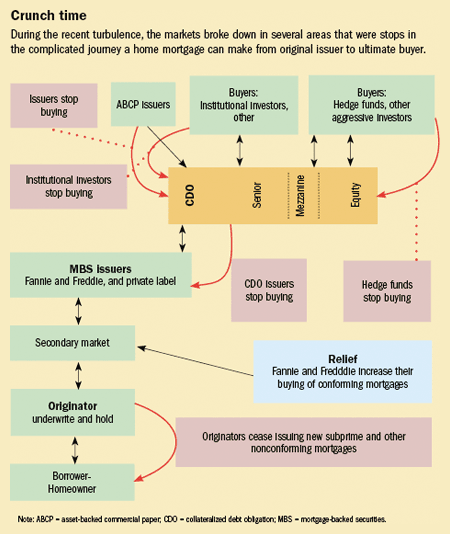From the Home News Tribune:
State homeowners “coped with the bursting of the housing bubble”
In June, Mary Lou Mangarella listed her New Brunswick home with discount real-estate broker Foxtons, in a move that unwittingly placed her smack dab in one of the biggest business stories of the year.
With the housing market in a steep decline, West Long Branch-based Foxtons went out of business in September. Her home sat for three more months until her Foxtons contract expired. And she finally sold it for 16 percent less than she originally asked.
“It was a nightmare,” said the 77-year-old Mangarella, who moved to Milltown in Middlesex County.
She summed up 2007 for many. Thousands of New Jersey homeowners coped with the bursting of the housing bubble. Home builders and real-estate agencies struggled sometimes futilely to stay in business. And the economic impact reverberated to local banks and retailers.
Through it all, the economy managed to stay afloat. New Jersey added jobs, albeit slowly. A regional mall lifted the curtain on a giant expansion. And telephone, cable and Internet companies slugged it out for customers with mixed results.
“The good news is we didn’t slip into a no-go mode,” Rutgers University economist James W. Hughes said. “The bad news is, we didn’t rev up to a go-go mode either.”
…
The housing market, which lost steam in 2006, fell into an outright slump in 2007. The median price of an existing single-family home in the region that includes Monmouth and Ocean counties was $391,000 during the third quarter, down 5.7 per-cent from the same quarter a year ago, according to the National Association of Realtors.Analysts said the prior growth in the price of homes outpaced wages, setting the stage for a steep correction that played havoc with homeowners, companies and investors.
…
The real-estate downturn caught up with other companies in 2007.Foxtons, which made its name by offering discount com-missions, closed in September after it ran out of money. It laid off more than 300 workers and filed for Chapter 11 bankruptcy with a reported $488,000 in as-sets and $40.9 million in liabilities.
Metro Homes, a Hoboken developer, halted construction in December on its 224-unit Esperanza high-rise in Asbury Park, citing poor real-estate conditions.
“We are convinced that the national mortgage crisis now impacting real-estate markets around the country represents a temporary setback, and we remain fully committed to Asbury Park and its rebirth,” Dean Geibel, president of Metro Homes, told the Asbury Park Press.
A quick real-estate recovery didn’t materialize.
One reason: With home prices climbing beyond their reach earlier this decade, many consumers needed to resort to unconventional financing, including subprime loans. Some of those buyers had poor credit histories. Others didn’t have money for a down payment.
The loans, which carried high interest rates, were affordable in the beginning. But after a year or two, the interest rate ad-justed. The payments rose. And many homeowners had to default.

